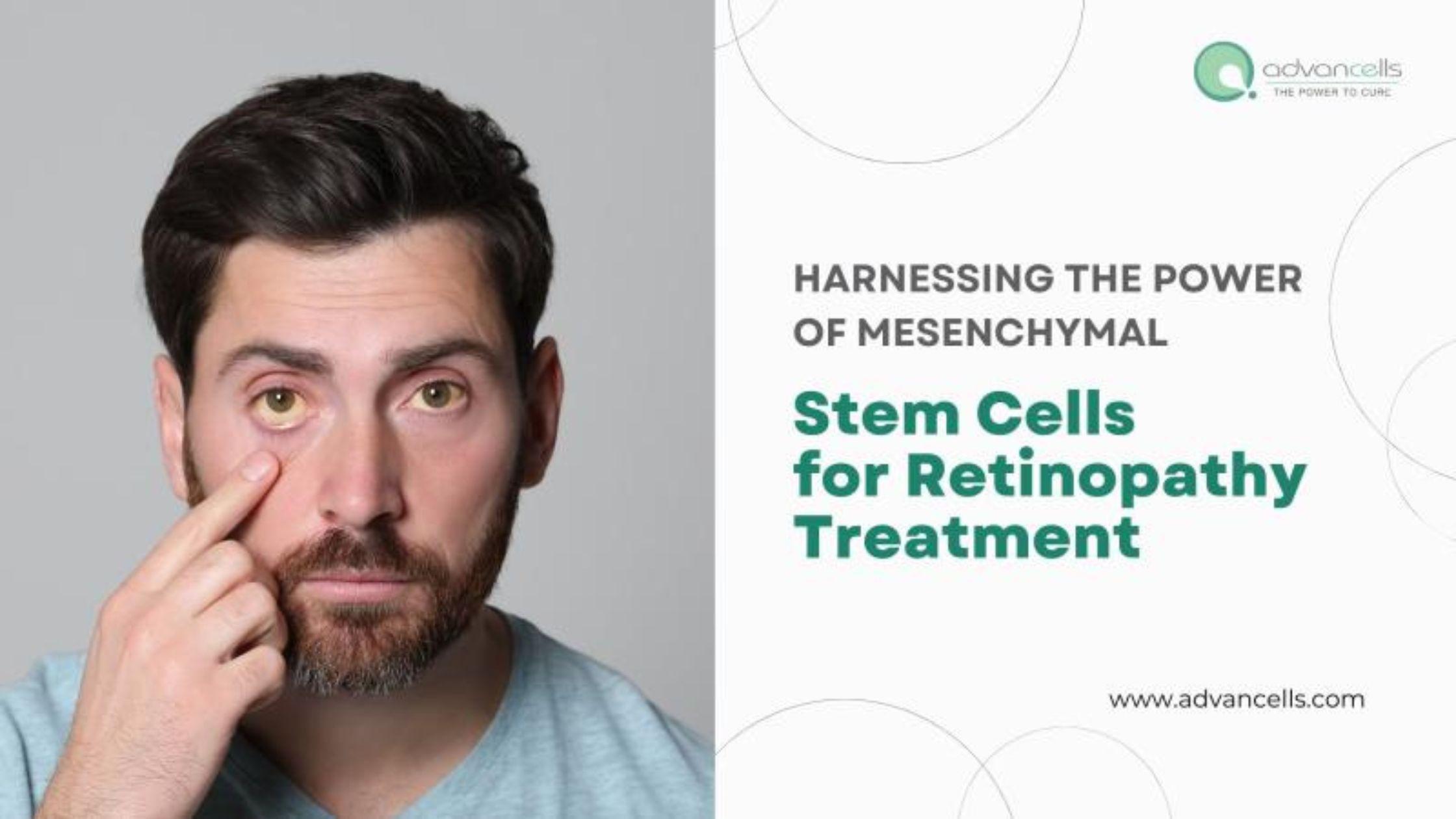Harnessing the Power of Mesenchymal Stem Cells for Retinopathy Treatment

The retina is essential to visual reception and retinopathy can result in partial to complete vision loss. Due to the myriad factors causing disruption in the retinal functions, the cases of retinopathy are on the rise. Although many treatments are available, they emphasize halting the disease progression and cannot restore the damaged cells.
Thus, an alternative treatment is the need of the hour. Mesenchymal stem cells possess the proven ability to transform into various cells and triggering tissue's own repair mechanisms through paracrine signaling. Thus, Stem Cell Therapy has the potential to recover the damaged areas and vision restoration.
Retina
The retina is present at the back of the eye. It typically consists of photoreceptor cells responsible for the converting light into nerve signals or impulses. These photoreceptor cells comprise rod cells that confer visibility in the dark and cone cells that are required for color vision. Macula is another region in the retina that facilitates central vision. All the nerve signals are transmitted to the brain via the optic nerve. Due to high usage of oxygen and polyunsaturated fatty acids, the retina is more susceptible to oxidative stress.
Retinopathy
Retinopathy is a general term for the pathological states related to the retina. It has multiple underlying genetic and environmental causative factors. Vision impairment results due to the destruction of blood vessels associated with the retina. The disrupted circulation causes neuropathy and vitreous hemorrhage. Neuropathy results from the low blood supply inducing the death of the optic nerve cells. On the other hand, ruptured blood vessels leak blood into vitreous humor, a gel-like substance in the eyeball, causing vitreous hemorrhage.

Types of Retinopathy
Chronic hypertension results in hypertensive retinopathy by constricting the blood vessels. The narrowed blood vessels damage the vessel lining endothelial cells, causing a thickening of the vessel wall and deteriorated blood circulation.
Uncontrolled oxidative stress is the Cause of Retinopathy of prematurity in premature infants. Age-related macular degeneration is due to degeneration of the macular area and the resulting loss of central vision with age.
Diabetic Retinopathy
Diabetic retinopathy is the most common type of retinopathy. The high glucose in blood leads to deposition in vessels, with extensive damage. There are two forms of diabetic retinopathy-
- Non-proliferative Diabetic Retinopathy: This form of retinopathy results from blood leakage into the retina due to aneurysms. As the vessel damage progresses, it results in ischemia (insufficient blood supply) and hypoxia (insufficient oxygen supply). These conditions trigger the expression of vascular endothelial growth factor (VEGF). VEGF induces vessel formation and could lead to increased vascular permeability and fluid accumulation, causing edema in the macula region.
- Proliferative Diabetic Retinopathy: It is the late and critical form of diabetic retinopathy. The growing blood vessels cause bleeding, resulting in vitreous hemorrhage.
In addition to disrupted blood circulation, diabetic retinopathy also features nerve cell damage and aberrant immune response.
Anti-VEGF therapies, neuroprotective agents, and lifestyle changes are prescribed for reducing the progression of the eye diseases. However, these treatments have limited potential to restore the lost cells.
Mesenchymal Stem Cells
Mesenchymal stem cells (MSCs) are popular in the field of regenerative medicine. They bear the advantage to form other cells as well as the mediate paracrine mechanisms to induce tissue repair. MSCs also exhibit anti-inflammatory and antioxidant activities that can reduce inflammation and reverse oxidative stress. They have vast therapeutic potential for treating eye diseases and leading to vision restoration.
Mesenchymal Stem Cell Therapy for Retinopathy
Evidence has shown that vessel function is restored with MSC therapy. MSCs also secrete neurotrophic factors like BDNF, NGF etc., that facilitate nerve cell survival and growth. Stem cell therapy has shown decreased loss of neurons and enhanced visual capability. Retinal pigment epithelium, the sheet between retina and capillaries, also ensures the structural barrier between retina and vessels. Defect in this sheet also leads to retinopathy. Experiments have proved the transdifferentiation of MSCs to pigment epithelial cells. An experiment assessed the neural stem cells, who differentiated from human umbilical cord MSCs in a laboratory. Neural stem cell transplantation showed decreased blood vessel injury, increased levels of BDNF, improved neuronal cell survival, reduced advancement of the eye diseases, and restoration of vision. A clinical trial has been exploring the usefulness of stem cell therapy in patients' with irreversible visual loss.
Conclusion
Retinopathy often leads to irreversible visual damage if not managed properly. There have been many advances in the treatment modalities for retinopathy. However, they cannot recover the damaged cells. Studies have shown the potential of MSCs in this field. They act in a multifaceted way to act on various aspects of the eye diseases. The Stem Cell Therapy for Retinopathy treatment has great prospects in vision restoration. Advancells is the leading manufacturer of umbilical cord MSCs. Their in-house team of scientists follows GMP-compliant processes and performs robust checks to ensure the high quality of MSCs for stem cell treatment.







